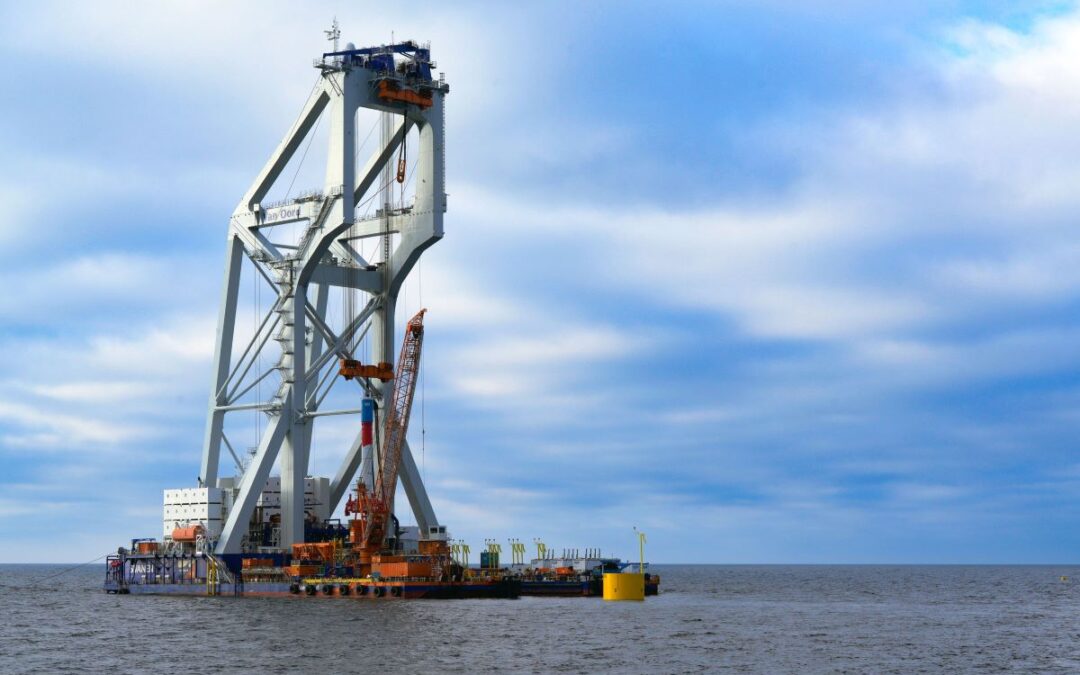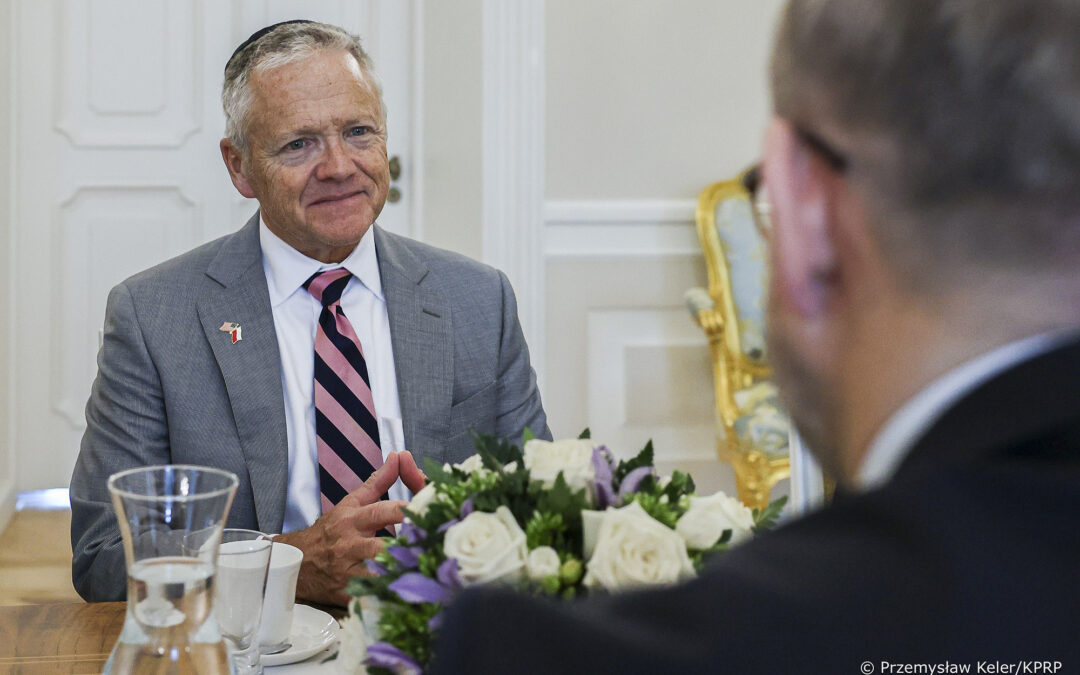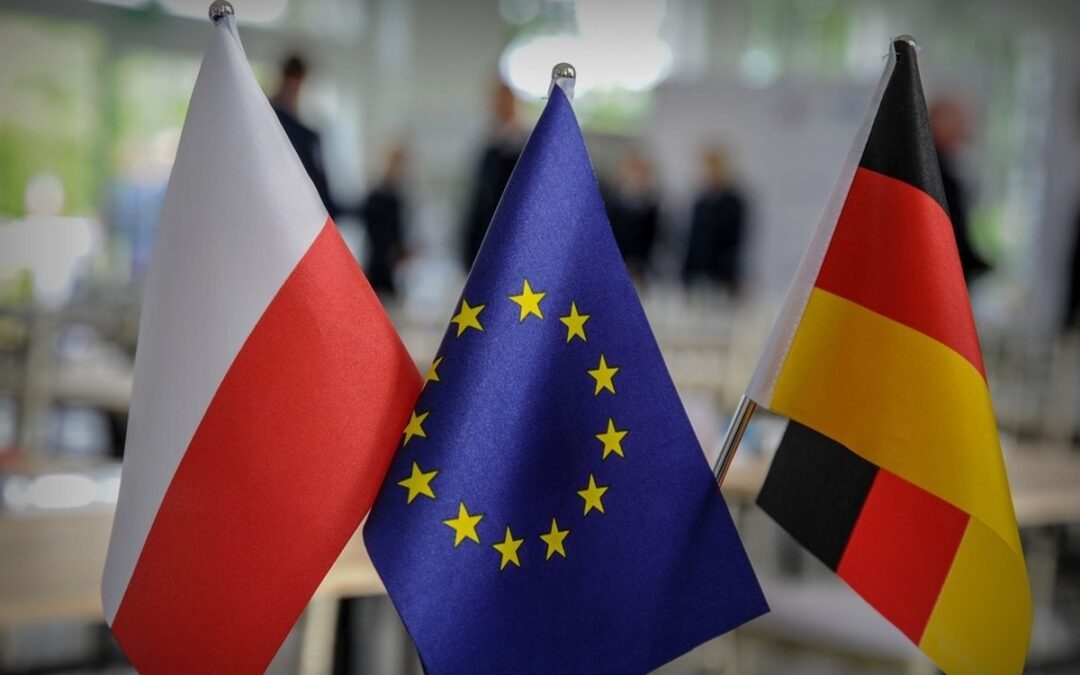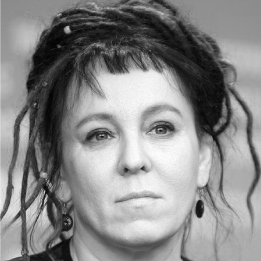Keep our news free from ads and paywalls by making a donation to support our work!

Notes from Poland is run by a small editorial team and is published by an independent, non-profit foundation that is funded through donations from our readers. We cannot do what we do without your support.
Construction of Poland’s first offshore wind farm, which is being established by Polish state energy giant Orlen and Canada’s Northland Power, has begun. The first two of 78 monopiles – steel structures that will support 15-megawatt turbines – have already been successfully installed.
The Baltic Power wind farm, which has a planned total capacity of 1.2 gigawatts (GW), is expected to begin operation in 2026, providing electricity to more than 1.5 million households.
The project is a key part of Orlen’s – and Poland’s – push towards replacing reliance on coal with cleaner forms of energy, in particular renewables and nuclear.
Konstrukcje morskich stacji elektroenergetycznych ukończone! To przez nie – w drodze na ląd – przepływać będzie 1140 MW energii z farmy Baltic Power. Stacje zostaną zainstalowane na Bałtyku już tej jesieni. pic.twitter.com/hwc1YC4XAO
— ORLEN (@GrupaORLEN) February 5, 2025
“After months of intensive work, we are proud to confirm that the first foundations for the Baltic Power project have been installed,” said Orlen’s CEO, Ireneusz Fąfara, in a statement issued by the firm. “By 2026, energy from the Baltic Sea will be flowing to consumers for the first time.”
Once completed, Baltic Power is expected to generate around 4,000 gigawatt-hours (GWh) of electricity annually, cutting CO2 emissions by approximately 2.8 million tonnes per year compared to conventional power generation, said Orlen.
Northland Power CEO Christine Healy described the installation of the first foundations as a milestone for offshore wind in Poland.
“We are very proud of our strong partnership with Orlen on this pioneering project,” she said. “This achievement not only demonstrates our progress together but also fuels our determination.”
Baltic Power’s construction site covers an area of around 130 square kilometres (50 square miles), roughly the size of Gdynia, a coastal city with a population of about 240,000 residents.
The monopiles now being installed – each up to 100 meters tall, with a base nine metres in diameter, and weighing up to 1,700 tonnes – are being driven into the seabed at depths of around 40 metres using a floating installation crane.
Eleven specialised vessels, including support ships, tugboats and environmental monitoring vessels, are involved in the project.
Poland’s PGE and Denmark’s Ørsted have finalised plans to build a 30 billion zloty offshore wind farm that will generate 1.5 GW, with construction beginning this year.
It is expected to provide electricity to around 2.5 million households, starting in 2027https://t.co/JAX92KjVQY— Notes from Poland 🇵🇱 (@notesfrompoland) January 31, 2025
As part of Orlen’s broader strategy, which includes large-scale energy storage, onshore renewables, gas-fired power plants and small modular nuclear reactors, it has secured licences for three additional offshore wind farms. Orlen wants to have more than 4 GW of installed capacity in the Baltic Sea.
Meanwhile, another Polish state energy firm, PGE, last week announced that it will later this year begin construction of Poland’s second wind farm, in partnership with Denmark’s Ørsted. The Baltica 2 offshore project will have a capacity of nearly 1.5 GW, meeting almost 3% of Poland’s electricity demand.
Renewables – mostly onshore wind and solar – have grown rapidly in Poland in recent years, accounting for 29% of the energy mix last year. However, coal still produced 57% of Poland’s electricity, by far the highest proportion in the European Union.
The current ruling coalition came to power in December 2023 promising to accelerate the energy transition. But since taking office, it has failed to enact any law that would bring those pledges closer to fruition.
When Donald Tusk’s government came to power, it promised to accelerate Poland's move away from reliance on coal.
But, after a year in office, the ruling coalition has failed to enact a single law that would significantly advance the energy transition https://t.co/TKFfoeAoKv
— Notes from Poland 🇵🇱 (@notesfrompoland) January 17, 2025

Notes from Poland is run by a small editorial team and published by an independent, non-profit foundation that is funded through donations from our readers. We cannot do what we do without your support.
Main image credit: Orlen press materials

Alicja Ptak is senior editor at Notes from Poland and a multimedia journalist. She previously worked for Reuters.



















